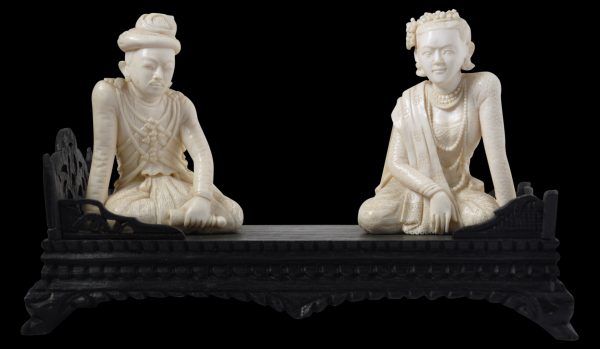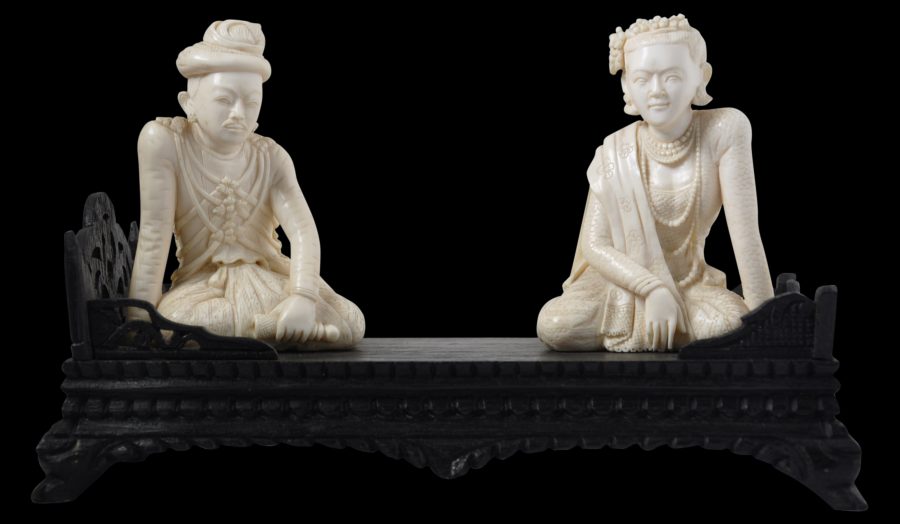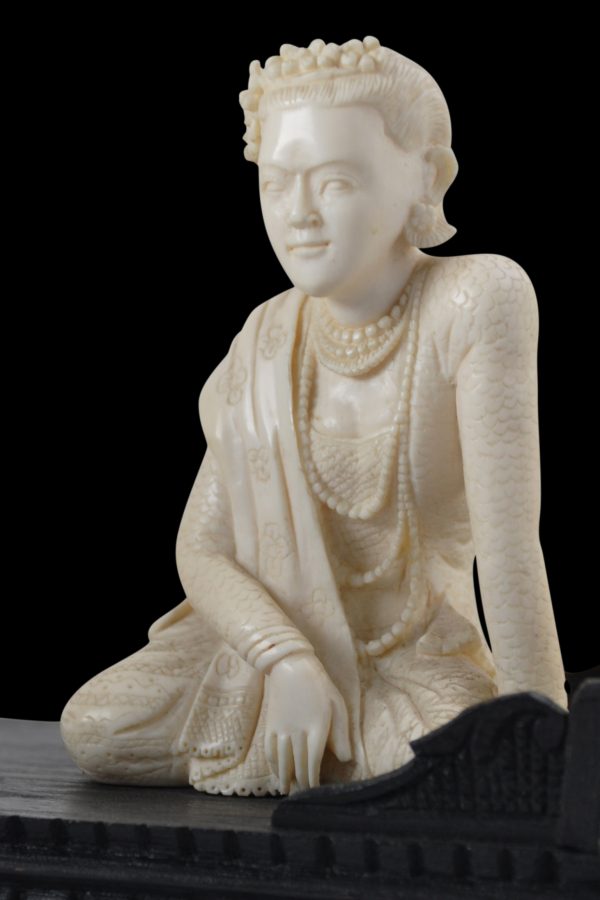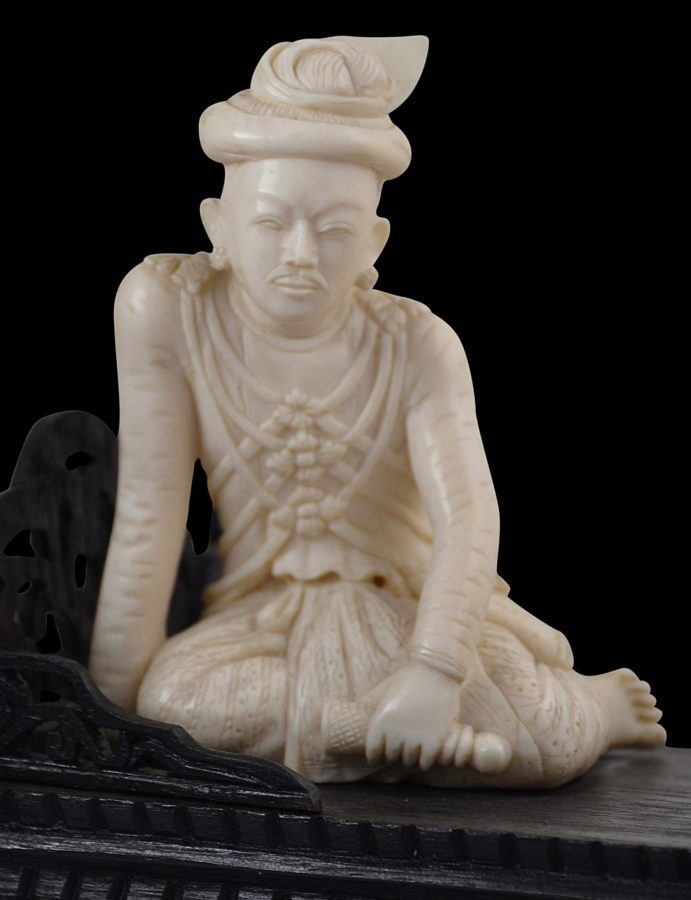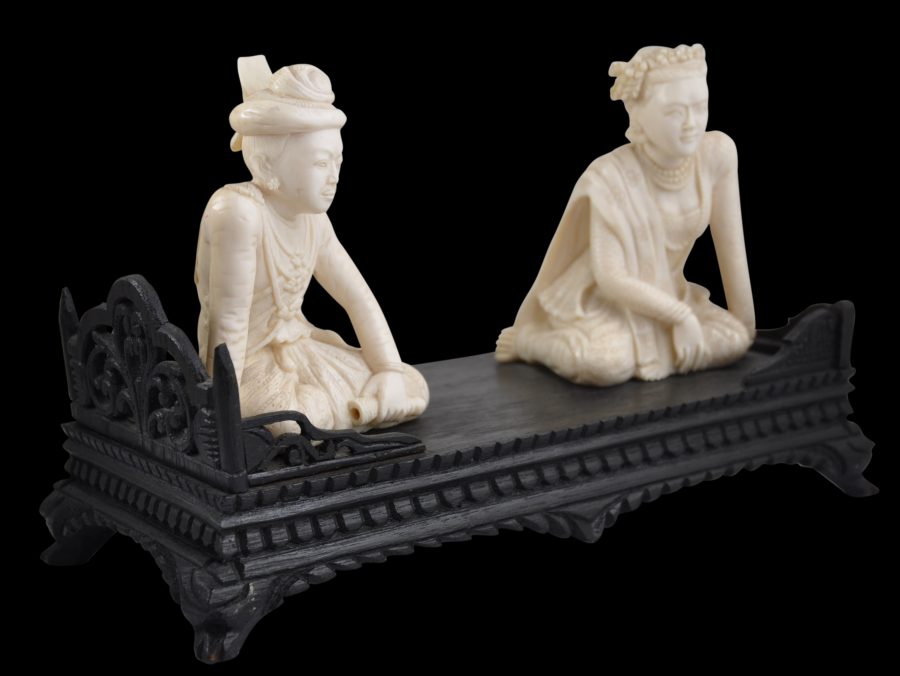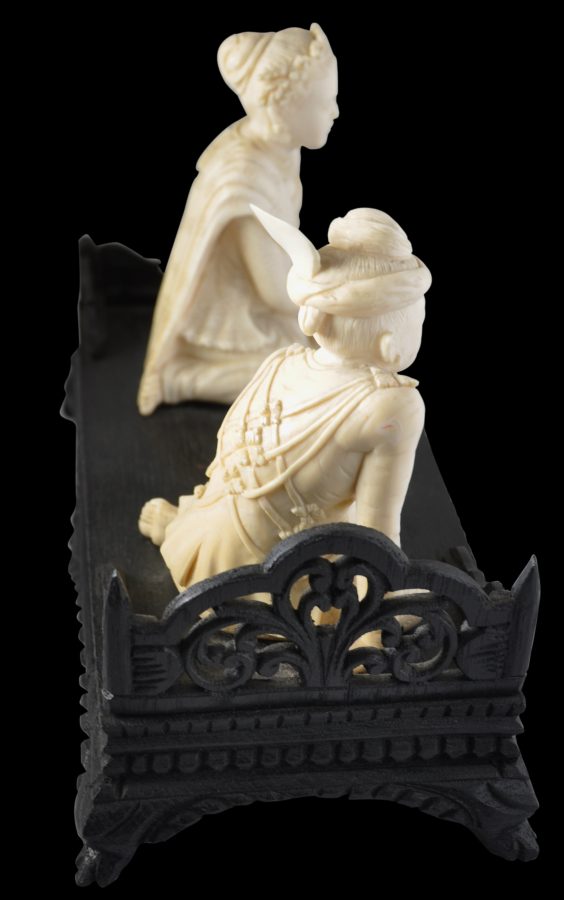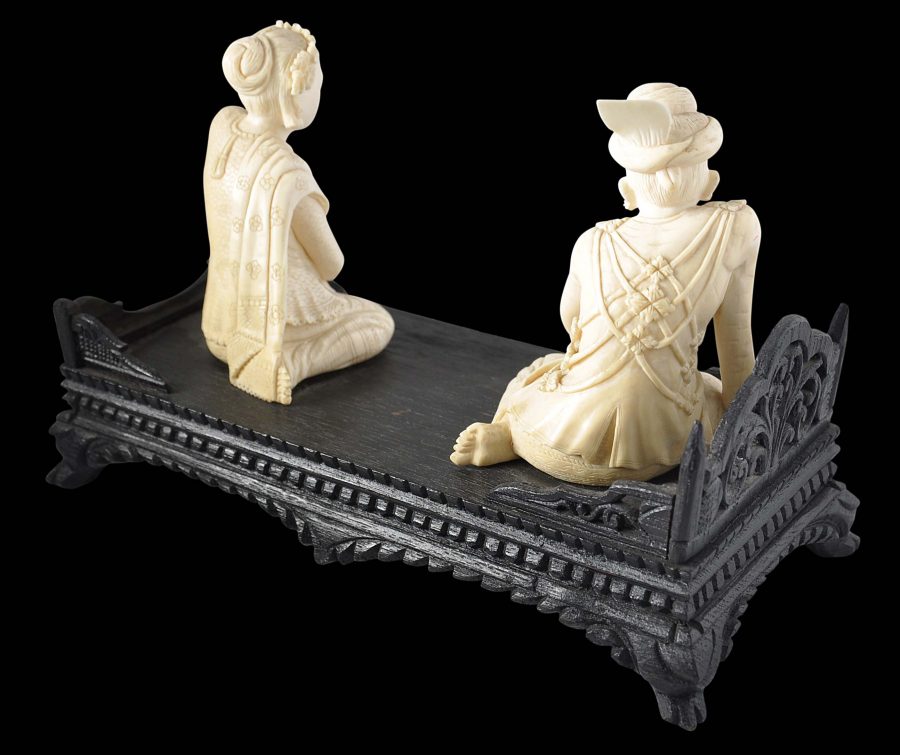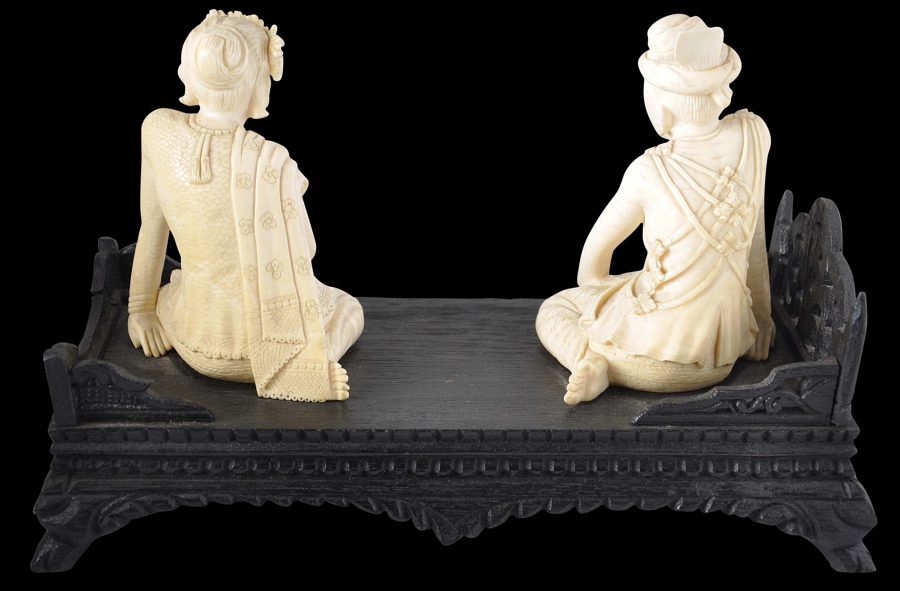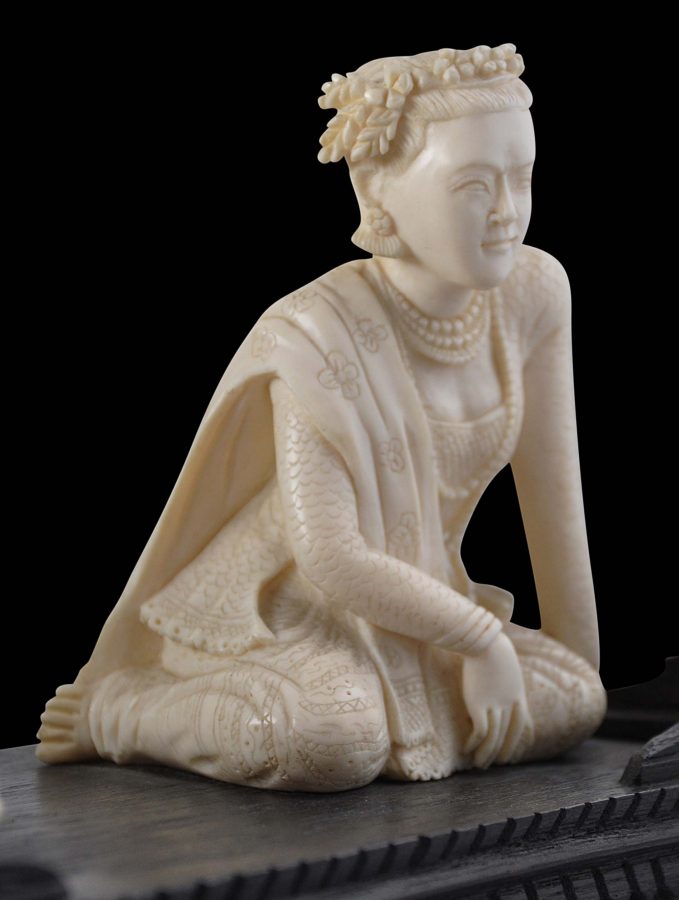This beautiful carved ivory group shows the last king of Burma Thibaw and his chief queen Suphayarlat (who also happened to be Thibaw’s half-sister) seated on a carved, ebonised wooden seating platform in typical pose. The item is in perfect condition: there are no losses, chips or repairs to the ivory, which has a lovely, age-related cream hue.
The pose of the sitters is typical – numerous paintings, photographs and engravings of them exist showing them sitting together in this manner.
The two ivory figures are firmly affixed to the wooden platform on which they sit in Burmese style on their legs and with their feet pointing away from them. Both wear copious jewellery. The queen wears le-ton (trembling) necklaces and other long chains that extend to her waist, and flowers in her hair. And the king wears sa-lwe chains of office across his chest and back. He also wears agaung-baung headcloth tied with a high wing at the back, a long ein-gyi jacket, a pah-so (sarong) with an acheik pattern.
According to Tingley, ivory was boiled in a solution to make it soft prior to carving. The design was outlined in charcoal on the ivory, which was then chiselled, filed and polished. Most of the ivory used in Burma at this time was sourced from the Shan States. Typically, elephants were not killed for their ivory; they were too valuable alive to be used for transporting logs and other heavy items. Instead, most ivory used in Burma was from elephants that died naturally.
Thibaw (b. 1859-1916) was the last king of the Konbaung Dynasty and the last king of Burma. He was deposed by the British with the defeat of his forces by those of the British in the Third Anglo-Burmese War in November 1885, prior to his kingdom’s formal annexation on 1 January 1886. Thibaw was aged 27 and his queen 26.
Thibaw succeeded to the throne in 1878 after a dramatic massacre. Hsinbyumashin, one of the then King Mindon’s queens, had grown dominant at the Mandalay court during Mindon’s final days. Under the guise that Mindon wanted to bid his children (other princes and princesses) farewell, Hsinbyumashin had all the princes and princesses who might be eligible to succeed to the throne murdered to ensure that Thibaw and her daughter Suphayarlat would assume the throne. Up to one hundred family members died in the massacre.
This is an excellent group, very sculptural and in excellent condition. The item was sourced from within the UK and most probably was brought to the UK during colonial times.
References
Fraser-Lu, S., Burmese Crafts: Past and Present, Oxford University Press, 1994.
Tingley, N., Doris Duke: The Southeast Asian Art Collection, The Foundation for Southeast Asian Art and Culture, 2003.


